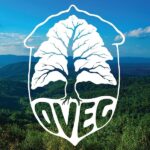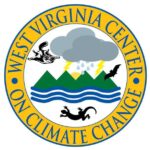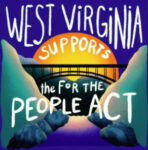By: Larry Thomas, President of WV Highlands Conservancy
Efforts have been persistent in promoting off-highway vehicle recreation on our public lands, Federal and state, in West Virginia in the state legislature for the last two years (see story on p. 10). For obvious reasons, the West Virginia Highlands Conservancy strongly opposes allowing this activity on our public lands.
- Our public lands are places of rest, solitude, peacefulness, and refuge. They are not the place for the noise and commotion that come with ORVs/ATVs. The noise is far too intrusive.
- They promote one use of public lands while
destroying all the other values that our public lands have. They just do not fit or belong on our public lands. - Protective rules that have long been established for our public lands would be substantially relaxed with the allowance of ORVs/ATVs on those public lands.
- There are numerous examples (videos and photos) of the destructive impacts where off road vehicle recreation is currently allowed on public lands and private lands.
- There are numerous examples of the cost for constant repair and restoration where OHVs have been used.
- There is a demonstrated need for constant monitoring/policing of the activities where OHVs are used and who would pay the costs of such monitoring/policing.
- There are numerous examples of the types of risks that are involved, accidents, deaths etc. Sample reports and photos are widely available.
Off Highway Vehicles are defined as any civilian off-highway vehicle, including motorcycles, motorized dirt bikes, All Terrain Vehicles (ATVs), snowmobiles, dune buggies, 4-wheel-drive jeeps, sport-utility vehicles, and any other civilian vehicles capable of off- highway, terrestrial travel (including utility vehicles [UTVs] and ATVs with more than 4 wheels).
Effects and concerns identified in a study by the United States Geological Survey are listed here:
OHV Effects on Soils and Watersheds
The primary effects of OHV activity on soils and overall watershed function include altered soil structure (soil compaction in particular), destruction of soil crusts (biotic and abiotic) and desert pavement (fine gravel surfaces) that would otherwise stabilize soils, and soil erosion. Indicators of soil compaction discussed in OHV effects literature include soil bulk density (weight per unit of volume), soil strength (the soil’s resistance to deforming forces), and soil permeability (the rate at which water or air infiltrate soil). Generally, soil bulk density and strength increase with compaction, whereas permeability
decreases with compaction.
As soil compaction increases, the soil’s ability to support vegetation diminishes because the resulting increases in soil strength and changes in soil structure (loss of porosity) inhibit the growth of root systems and reduce infiltration of water. As vegetative cover, water infiltration, and soil stabilizing crusts are diminished or disrupted, the precipitation runoff rates increase, further accelerating rates of soil erosion.
OHV Effects on Vegetation
Plants are affected by OHV activities in several ways. As implied above, soil compaction affects plant growth by reducing moisture availability and precluding adequate taproot penetration to deeper soil horizons. In turn, the size and abundance of native plants may be reduced. Above-ground portions of plants also may be reduced through breakage or crushing, potentially leading to reductions in photosynthetic capacity, poor reproduction, and diminished litter cover.
Likewise, blankets of fugitive dust raised by OHV traffic can disrupt photosynthetic processes, thereby suppressing plant growth and vigor, especially along routes traveled by OHVs. In turn, reduced vegetation cover may permit invasive and/or non-native plants— particularly shallow rooted annual grasses and early successional species capable of rapid establishment and growth—to spread and dominate the plant community, thus diminishing overall endemic biodiversity.
OHV Effects on Wildlife and Habitats
Native, Threatened, and Endangered Species Habitats for native plants and animals, including endangered and threatened species, are impacted by OHVs in several ways. A salient effect is habitat fragmentation and reduced habitat connectivity as roads and trails used by OHVs proliferate across the landscape. Reduced habitat connectivity may disrupt plant and animal movement and dispersal, resulting in altered population dynamics and reduced potential for recolonization if a species is extirpated from a given habitat fragment.
Wildlife is also directly affected by excessive noise (decibel levels/noise durations well above those of typical background noise) and other disturbances associated with OHV activities. Disturbance effects range from physiological impacts—including stress and mortality due to breakage of nest-supporting vegetation, collapsed burrows, inner ear bleeding, and vehicle-animal collisions—to altered behaviors and population distribution/dispersal patterns, which can lead to declines in local population size, survivorship, and productivity.
OHV Effects on Water Quality
The effects of OHV activities on water quality can include sedimentation (deposited solids), turbidity (suspended solids), and pollutants within affected watersheds. Sedimentation increases because compacted soils, disrupted soil crusts, and reduced vegetation cover can lead to increased amounts and velocities ofrunoff; in turn, this accelerates the rates at which sediments and other debris are eroded from areas with OHV-use and flushed to aquatic systems downslope. Pollutants associated with deposition of OHV emissions and spills of petroleum products may be adsorbed to sediments, absorbed by plant material, or dissolved in runoff; once mobilized, these contaminants may enter aquatic systems.
OHV Effects on Air Quality
Air quality is affected when OHV traffic raises fugitive dust and emits by-products of combustion. Because wind can disperse suspended particulates over long distances, dust raised by OHV traffic can blanket plant foliage and disperse dust-adsorbed contaminants well beyond a given area of OHV-use. Primary combustion by- products potentially affecting air quality in OHV use areas include (but are not limited to) polycyclic aromatic hydrocarbons, sulfur dioxide (SO2), nitrogen oxides (NOx), and ozone (O3).
Socioeconomic Implications of OHV Use
The socioeconomics of OHV use include (1) OHV user demands, concerns, and attitudes; (2) the economic effects of OHV use on communities near OHV-use areas; (3) and the effects of OHV use on other land users. Although not one of Bureau of Land Management’s land health considerations, the socioeconomic implications of OHV use have significant direct and indirect effects on land health. As the popularity of OHV recreation increases, socioeconomic factors become increasingly important considerations in understanding and mitigating the overall effects of OHV use on land health. OHV use also can lead to conflicts among different land users—both OHV users and people seeking non-motorized forms of recreation—within OHV-use areas and nearby areas. Crowding of designated OHV areas may encourage unauthorized use in closed areas, and adjacent or overlapping use types may cause dissatisfaction or discourage recreation altogether, which can diminish public support for land management programs.
Documents stating the position of the United States Forest Service, which manages the Monongahela National Forest, and other information can be found here.
- News release: Allowable Use of Motor Vehicles on Mononga- hela National Forest Roads and Trails: https://www.fs.usda. gov/detail/mnf/news-events/?cid=FSEPRD860642
- Closure order for Licensed Off-Highway Vehicle Use Restrictions: https://www.fs.usda.gov/detail/mnf/ notices/?cid=FSEPRD860625
- Closure order for motor vehicle use restrictions: https://www. fs.usda.gov/detail/mnf/notices/?cid=FSEPRD860626
The negative effects of OHVs/ATVs go way beyond interfering with a peaceful atmosphere. As you can see from the above information, they create lots of impacts to soils, watersheds, vegetation, wildlife and their habitats, water quality, air quality and create socioeconomic implications. Those impacts accrue very quickly. That’s why West Virginia Highlands Conservancy and other environmental organizations think that it is a bad idea to consider allowing them anywhere on our public lands.
Link to the full article can be found here.






Wow, what a lot of big words you manage to crowd in there! While it does increase the scientific sound of it, it doesn’t improve the readability. It would be much more memorable if you just said that ATVs tear up the plants, pack the soil down, scare the animals and pollute the waters. There is just a bit of territory being kept wild for people to breathe fresh air, and look at plants and animals. The ATVs seem to be doing their best to reduce all that wilderness to road surfaces. Let them run on previously paved roads. If people want to relate to the wilderness, they should leave behind those noisy, smelly machines that keep them from hearing or smelling the freshness!